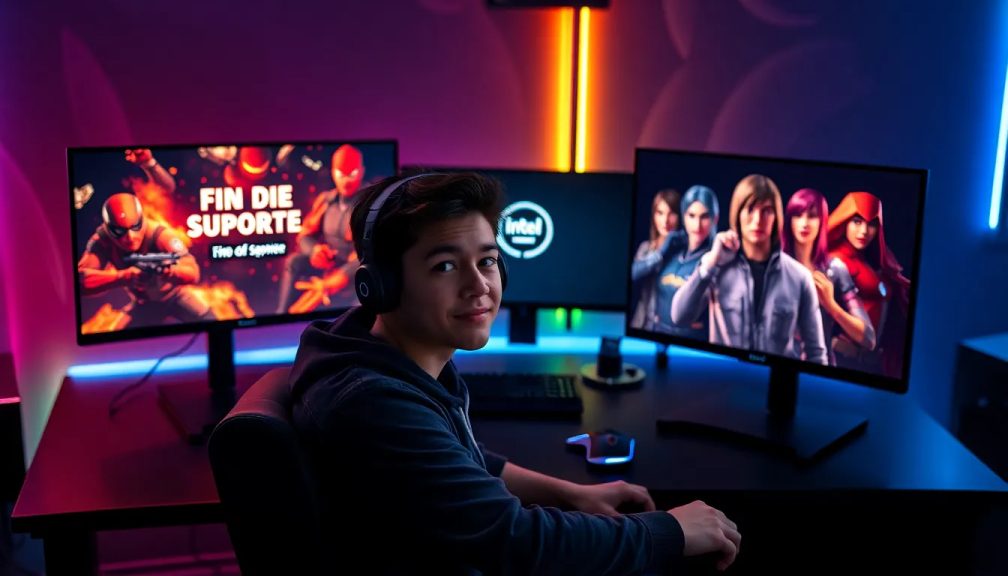End of Game Support for Intel iGPU from 6th to 14th Gen

The landscape of integrated graphics processing units (iGPU) has undergone a significant transformation with Intel's recent announcement regarding driver support. As of September 19, 2025, Intel has officially segmented its drivers for processors ranging from the 6th to the 14th generation, which includes various families such as Atom, Pentium, and Celeron. This strategic shift indicates a move towards a legacy support model, raising important questions about the future of gaming and performance optimizations for older architectures. The implications of this decision resonate deeply within the tech community, eliciting both praise and criticism.
On the one hand, this move signifies Intel's commitment to focusing on its latest generations of processors, which promise enhanced performance and capabilities. On the other, it leaves a substantial user base with aging hardware without the optimizations they may have come to expect. This duality is at the heart of the conversation surrounding Intel’s evolving strategy in the competitive landscape of graphics technology.
Understanding Intel's segmentation of driver support
Intel's decision to segment its driver support has surfaced as a pivotal moment in its approach to iGPU development. By halting the provision of gaming optimizations for older architectures, Intel is effectively acknowledging that these processors have reached the end of their lifecycle in terms of active development. The realities of modern gaming demand continuous improvements, and Intel aims to channel its resources toward the architectures that will shape the future of its graphics technology.
As part of this segmentation, Intel will continue to release quarterly updates for the affected processors, but these updates will not include performance enhancements specifically aimed at gaming. Instead, users can expect only critical patches and security fixes. This shift is particularly notable for the following generations:
- Skylake (6th Generation)
- Kaby Lake (7th Generation)
- Coffee Lake (8th and 9th Generation)
- Whiskey Lake (8th Generation)
- Comet Lake (10th Generation)
- Ice Lake (10th Generation)
- Tiger Lake (11th Generation)
- Rocket Lake (11th Generation)
- Alder Lake (12th Generation)
- Raptor Lake (13th Generation)
- Raptor Lake Refresh (14th Generation)
- Atom, Celeron, and Pentium series processors
This decision reflects a clear demarcation between legacy and current technology, as Intel aims to optimize its support structure for future growth while maintaining essential security features for its existing user base.
Strategic focus on future generations
Intel’s shift highlights a strategic pivot towards newer architectures such as Meteor Lake, Arrow Lake, and Lunar Lake. The focus on advanced technology is not just a matter of improving performance; it is about ensuring that the company stays competitive in an increasingly challenging market driven by rapid technological advancements. The new architectures represent a significant leap forward, particularly in the realm of dedicated graphics processing capabilities.
Intel's embrace of new technologies is underscored by its commitment to releasing frequent driver updates for contemporary graphics solutions, including:
- Monthly driver releases for current generations
- Real-time compatibility enhancements for newly launched games
- Ongoing development of dedicated graphics cards
This proactive approach is designed to ensure that Intel remains relevant within the gaming community, even as it retracts support for older models. The company recognizes that gamers demand not only performance but also reliable and secure hardware, which is why stability remains a priority.
Implications for gamers and enthusiasts
The ramifications of Intel's new driver support policy extend far beyond the technicalities of software updates. For gamers utilizing older Intel processors, the lack of optimization can significantly impact the gaming experience. Titles that rely heavily on graphics performance may run less smoothly, and users could find themselves at a disadvantage in competitive gaming environments.
Enthusiasts who have invested in older Intel hardware may feel disenfranchised, particularly as new gaming titles continue to push the boundaries of graphical fidelity. The absence of timely driver updates aimed at improving performance can lead to frustration, especially for those who cherish Intel’s historical commitment to gaming.
Security and stability take precedence
Despite the challenges that come with this segmentation, Intel has promised to uphold its commitment to security and stability for the affected architectures. This assurance serves to alleviate some concerns among users, as they can still expect critical updates to maintain system integrity.
The shift signifies a broader understanding within Intel that resources must be allocated wisely to ensure cutting-edge performance in new product launches. The need to prioritize security patches means that users can maintain a level of confidence in their existing systems, even if they won't receive the gaming-focused updates that were once standard.
Future developments and expectations
As Intel continues to develop its new architectures, the industry will be watching closely. The upcoming Panther Lake architecture, which promises to leverage the advantages of the Celestial graphics solutions, is a particularly exciting prospect for fans of Intel technology.
Intel’s commitment to innovation, highlighted by its recent partnership with NVIDIA, suggests that the company is not stepping back from the gaming arena but rather recalibrating its approach to meet evolving demands. The landscape of integrated graphics and dedicated solutions is set for further transformation, with Intel poised to reclaim its position as a key player.
In conclusion, while the changes in Intel’s driver support may be disappointing for users of older generations, they reflect a necessary evolution within the company. As Intel works to align its resources with future innovations, the gaming community can anticipate exciting developments that could redefine performance standards in the years to come.
For those interested in delving deeper into the topic, check out this informative video on the implications of these changes:




Leave a Reply